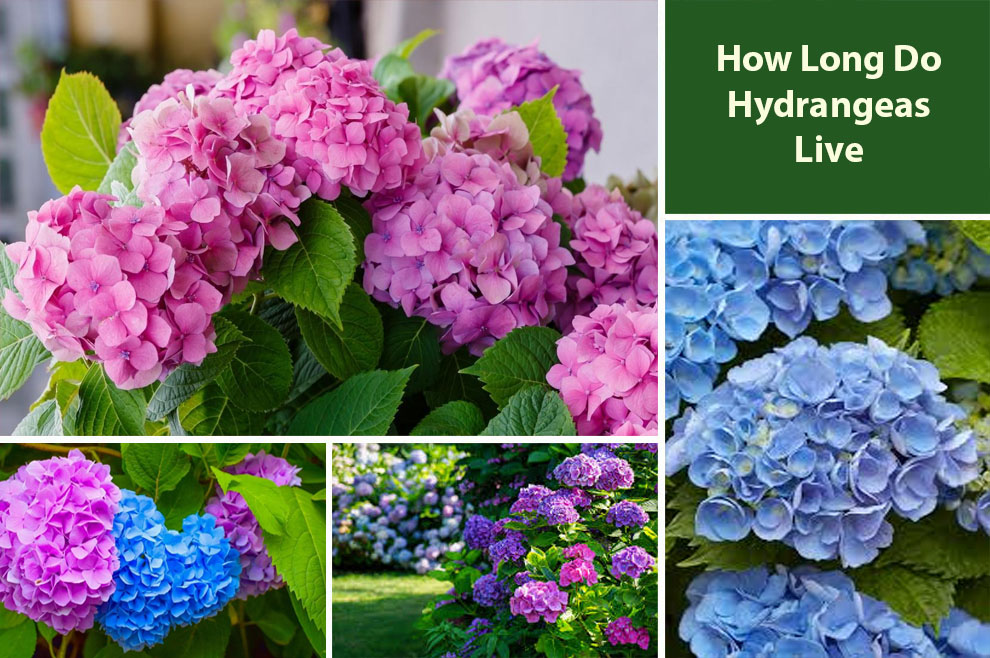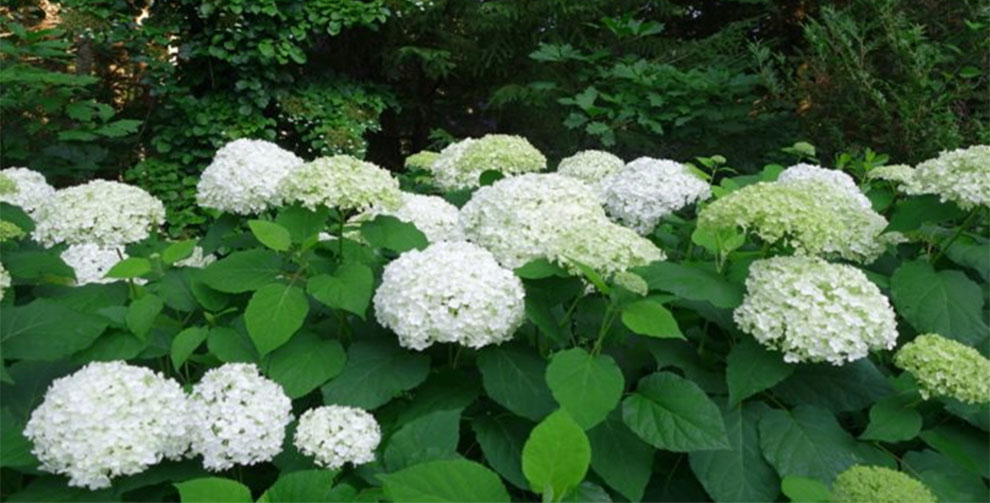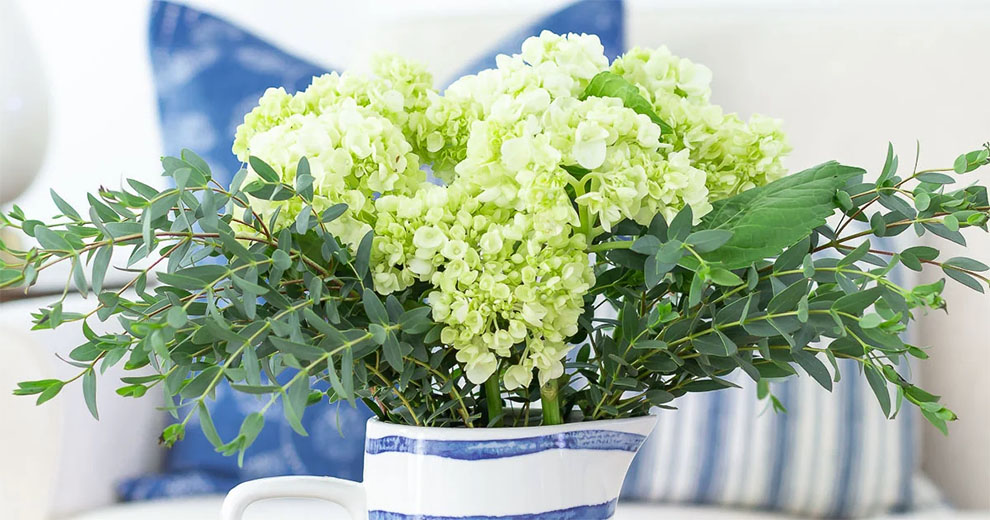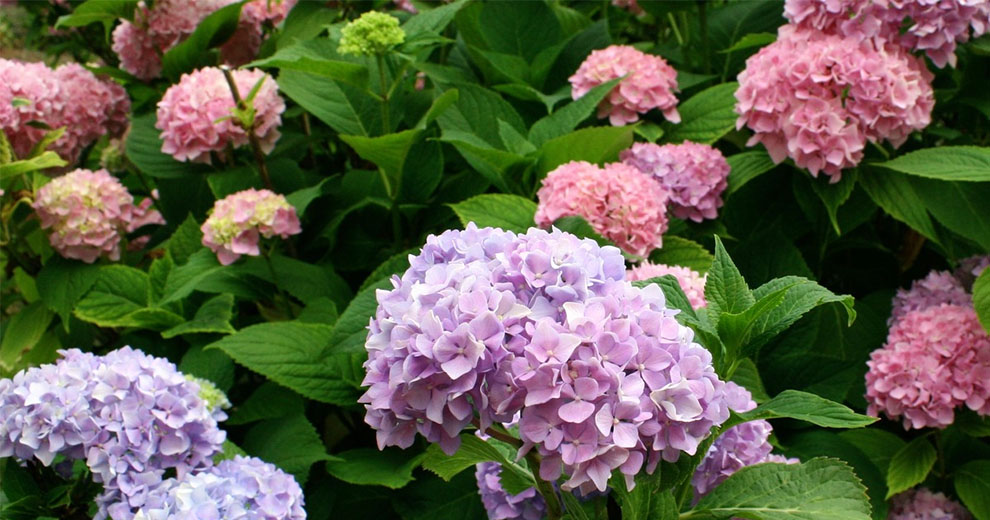Hydrangea Lifespan: How Many Years Do They Live?
Amongst the flowering plants, hydrangeas live for a long time that is generally five years. Some varieties live even longer for more than ten years. All you got to do is care for them properly.

Hydrangeas are beautiful flowering plants known for their beautiful clusters of showy, vibrant flowers that range in blue, pink, purple, and white colors.
In this article, today we will tell you about how long do hydrangeas live to adorn your garden.
You will be delighted to learn that hydrangeas are long-lived shrubs. Once planted, Hydrangeas live up to an impressive five decades or more with proper maintenance and care.
Gardeners worldwide love and adore hydrangeas for their versatility, longevity, and ability to adapt to different growing and climatic conditions.
Fortunately, they are low-maintenance shrubs but demand regular watering, especially during dry and hot weather. Pruning is also imperative for healthy growth, longevity, and maintaining their shape.
By offering them the right conditions, hydrangeas can become a cherished part of your garden, delighting you with their timeless beauty for many decades. So whether you love the splendor of nature or are a gardening enthusiast, consider adding these enduring shrubs to your outdoor oasis.
How Many Years Do Hydrangeas Live?
Amongst hydrangeas, the lifespan usually depends on several factors, including the growing conditions, variety, and care offered. On average, hydrangeas live approximately two to five decades. However, these shrubs have thrived for even longer durations in some cases.
Different varieties and species usually have different lifespans. For instance, the Hydrangea macrophylla, or the Bigleaf hydrangea, is known for its moderate longevity. On the other hand Oakleaf hydrangea’s lifespan is several decades. Other varieties like Hydrangea arborescens or smooth hydrangea have a shorter lifespan.
We will get to each of them in the next section in detail.
The Lifespan of Hydrangeas from Different Varieties
Now let us take you through the average lifespan of different hydrangeas varieties of these shrubs to make you understand better. The basis on whether you seek a long-lasting or a short-live hydrangea in your garden or yard, you can make a choice.
A. Bigleaf Hydrangeas Lifespan (Hydrangea macrophylla)
These hydrangeas usually have an average lifespan of two to three decades. With proper care, these attractive shrubs can occasionally exceed this bracket and live for up to five decades (or more).
B. How Long Do Hydrangeas Live from The Oakleaf Variety (Hydrangea quercifolia)
Oakleaf hydrangea varieties are particularly famous for their longevity and durability. On average, they live for three to five decades.
They are hardy shrubs prized for their oak-shaped, large leaves and cone-shaped flower clusters. With their exceptional lifespan, they can be a valuable addition to your landscape or garden.
C. Panicle Hydrangeas (Hydrangea paniculata)
These varieties are known for their longevity and resilience. Panicle hydrangeas are robust shrubs. So, you can expect a hydrangea life expectancy of four to five decades.
Their elongated cone-shaped flower clusters and the ability to thrive in different soil types add to their longevity. With regular maintenance and care, they can grace your garden for decades.
D. Smooth Hydrangeas (Hydrangea arborescens)

Smooth hydrangeas have an average lifespan. They usually live for two to three decades. These versatile shrubs are loved for their adaptability to different growing conditions and rounded flower clusters.
Give them proper care, including watering and regular pruning, and they can thrive and add beauty to your yard for many yards.
E. Climbing Hydrangeas (Hydrangea petiolaris)
Famous for their impressive lifespan, the Climbing Hydrangeas usually live for three to five decades, sometimes even more.
These vigorous vines can cover fences, walls, and arbors with attractive lacy, white flower clusters and beautiful foliage. Given the proper care and support, they can become long-lasting fixtures in your garden, adding vertical charm and interest.
Cut Hydrangea Lifespan In The Vase

Cut hydrangeas in a vase can vary depending on multiple factors, including environmental conditions, care, and the variety chosen. On average, cut hydrangeas usually live for five to fourteen days in a vase.
But with proper attention and care, you can extend their lifespan even further. To maximize the longevity of your cut hydrangeas, you can take the below-listed steps:
- Trim the stems at a forty-five-degree angle before inserting the hydrangeas in a vase. It aids in better water absorption.
- Strip off the leaves that should be submerged in the water, as they promote bacterial growth and shorten the flowers’ life expectancy.
- Fill in clean water into the vase. Ideally, the water should be at room temperature (neither very hot nor too cold).
- Change the water every two to three days or anytime it seems cloudy.
- Hydrangeas are water-loving flowers. So, ensure you fill the vase with an adequate amount of water. It helps avoid wilting and dehydration.
- Move the vase to a cool area away from drafts, direct sunlight, and excessive heat sources, as the cooler temperature is vital for hydrangeas to stay fresh for a long.
By following these hydrangea care guidelines, you can enjoy the beauty of your cut hydrangeas for a long time, accentuating the ambiance of your indoor space.
Factors Affecting Hydrangea Life Expectancy
Some factors influence how long your hydrangeas live. These are as follows:
1. Variety of hydrangeas: The hydrangea species grown determines its life expectancy, as some hydrangeas live longer than others.
2. Growing needs: Naturally, they live longer when the hydrangeas get favorable growing conditions. So, get educated on their sun, soil, and water preferences to ensure your hydrangeas live their full lifecycle. Typically, hydrangeas thrive in full sun to partial shade, well-draining soil with sufficient water.
3. Environmental and climatic factors: These also determine how long your hydrangeas live. Hydrangeas do not do their best in extreme conditions or long durations of drought and heat.
4. Disease and pest management: Lastly, proper disease and pest management is also necessary to have your hydrangeas live long.
Thus, you must regularly inspect your shrubs for any signs of pests and diseases and take immediate remedial action whenever you spot them.
Care well for your hydrangea plants to manage and prevent issues like fungal pests, infections, and diseases that compromise the life and health of these beautiful flowering shrubs.
Common Queries About The Lifespan of Hydrangeas

A. How long do hydrangeas take to grow?
On average, hydrangeas take between two to three years to reach maturity and their full size. The time hydrangeas take to grow is also variable with the care provided, and the specific hydrangea variety.
In the first year of planting, hydrangeas focus on establishing their root system and may present significant above-ground growth. In the second year, they branch out and develop more foliage. By the third year, hydrangeas reach their desired size and produce flowers.
But please note that the growth rate varies amongst different hydrangea species. Some kinds grow faster or slower than others. Further, offer optimal growing conditions, such as nutrient-rich soil, water, and sunlight, to promote faster development and growth in hydrangeas.
B. How long do hydrangeas last in the summer?
Hydrangeas can usually last across the summer, providing continuous blooms for an elongated period, but different species have varying bloom times within the season.
Some varieties bloom as early as late spring and continue flowering into early fall, whereas others have a shorter blooming window.
C. How long do hydrangeas last in floral foam?
Floral foam aids in moisture retention. They offer hydration to the cut hydrangea stems.
But, hydrangeas have woody stems, making it challenging for them to absorb water from the foam effectively. Thus, hydrangeas usually last for approximately two to four days in floral foams.
But this duration may vary depending on the factors like hydrangeas’ health before placing them in foam, the foam’s hydration level, and the environmental conditions.
So to maximize the hydrangea lifespan in hydrangea floral foam, you must regularly add water. Further, keep the hydrangeas and foam in a cool, shaded place away from direct sun and heat sources to prolong their freshness.
D. How long do hydrangeas take to bloom?
On average, hydrangeas bloom in their second or third year after planting. In the first year, they focus on foliage growth and establishing the root system.
During this duration, the hydrangeas do not produce significant buds. In the 2nd and 3rd years, they allocate more energy toward blooming as the plants mature.
The specific blooming time can vary amongst different hydrangea varieties. Some species bloom in late spring or early summer, like the bigleaf hydrangeas (Hydrangea macrophylla). Others, like panicle hydrangeas (Hydrangea aniculate), may bloom in mid to late summer.
You must have a look at our fertilizer recommendation for hydrangeas and use them appropriately on your plants to let them thrive.
E. How long do hydrangeas last without water?
Hydrangeas are pretty resilient but need constant hydration to thrive and maintain their health. Without water, they wilt and suffer from dehydration. The exact duration that hydrangeas can last sans water varies depending on temperature, environmental conditions, and the plant’s overall vigor and health.
Typically, hydrangeas show signs of wilting within a day or two if they do not get water. Hence, you must provide them with ample moisture, especially during dry and hot periods. Adequate hydration helps avoid wilting, extends the plant’s lifespan, and promotes healthy growth.
Thus, water the hydrangeas deeply, ensuring the soil is moist, not waterlogged, to help them withstand periods sans water more effectively.
